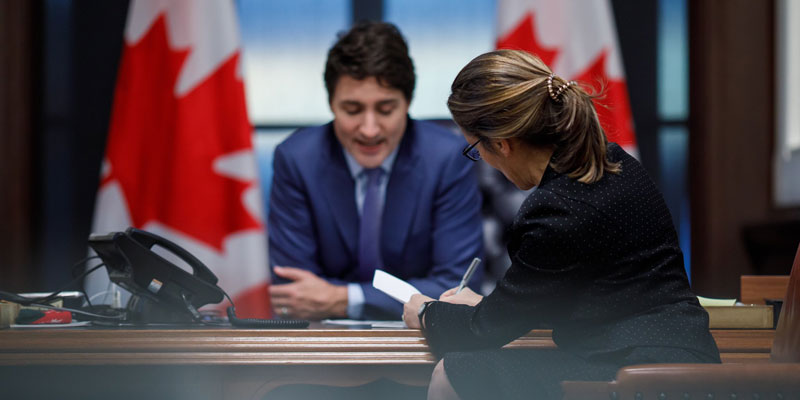What are the Trudeau government’s guiding priorities?

In his January 2021 mandate letter to Chrystia Freeland, the recently appointed finance minister, Prime Minister Trudeau reaffirmed commitments set out in the 2019 mandate letter to Bill Morneau and outlined additional priorities resulting from the pandemic.
Of note are key principles for the fiscal plan.
In 2019, the first of four principles were to “reduce the Government’s debt as a function of our economy.” In the 2021 letter, it’s affirmed that Canada’s fiscal advantage must be preserved and while the economy would be supported with emergency measures, it was also noted that “Doing so, you will avoid creating new permanent spending.”
Three months later Freeland delivered the government’s first budget since 2019 and permanent spending in the form of a childcare and early learning strategy is announced. Although the budget includes a long-term plan to reduce debt (as a share of GDP), it’s only with assumptions about low interest rates and low inflation. With the commitment for a national daycare plan, Freeland has clearly not fulfilled this aspect of the mandate. But as Paul Wells notes, “Public officials should be reluctant to make it this clear their instructions have no meaning.”
It used to be the norm that there were guiding principles on policy decisions. Various prime ministers including Jean Chretien, Paul Martin and Stephen Harper embraced the idea that new policy initiatives and government programs had to fulfill specific criteria to be maintained or adopted.
The process was formalized in 2003 when the federal Liberal government created the Expenditure Review Committee (ERC) that examined all federal spending. It was chaired by the president of the treasury board and included senior cabinet ministers. The ERC assessed existing programs, government spending and new initiatives using seven elements for review.
First was whether the program was in the public interest, followed by a question on whether it was the role of government to deal with the issue. They also examined the thorny issue of it being in the federal government’s jurisdiction, and if they could partner with the private or voluntary sectors to handle the issue.
Additional criteria included questions on efficiency, affordability and value for money. In sum, the ERC had a robust set of tools to assess the efficacy of any program, existing or new.
One of the things that Trudeau changed when he became prime minister was to disband the ERC. Although it’s not explicitly stated, it appears the ERC has been replaced with the Cabinet Committee on Agenda, Results and Communications. Presumably, the committee has a similar mandate to the ERC but its outward-looking documents focus on mandate letters.
Starting in 2016, the government made public all the mandate letters of cabinet and began tracking each policy commitment. Prior to the 2019 election, one could see the progress made on each of the government’s priorities. The mandate letter tracker website boasted how it was delivering results for Canadians. That website has not been updated since the 2019 election, even though the government continues to make public the tracking letters. At the top of the mandate tracker website is an ominous yellow banner warning that “We have archived this page and will not be updating it.” They do announce that a “new tracker will be published when operational realities allow.”
One of those “operational realities” will be the inconvenient problem of the disconnect between the mandate letters and the 2021 budget.
The mandate tracker is based on advice from policy consultant Michael Barber who helped British prime minister Tony Blair and Ontario premier Dalton McGuinty. Barber has several rules to help governments focus on transformative change—he calls this “deliverology.” Key to his message is setting priorities and communicating success. Although the Trudeau government has made a near-religion out of communicating success, they seem to have lost their way in setting priorities. Of the 57 rules of deliverology, the first is have an agenda, the second is to “decide on your priorities (really decide).”
It appears we might indeed need an election to give the government an agenda, and perhaps that might force them to really decide on what their priorities will be.
Author:
Subscribe to the Fraser Institute
Get the latest news from the Fraser Institute on the latest research studies, news and events.

